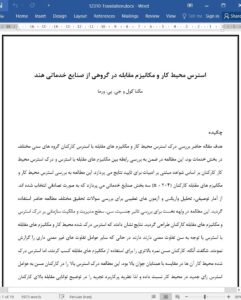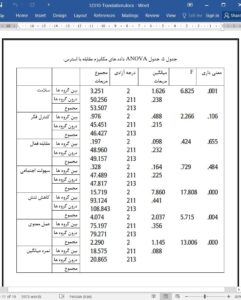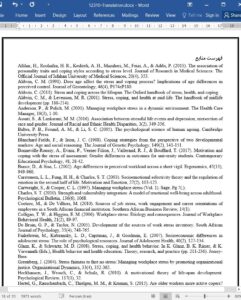Abstract
The purpose of this paper was to explore workplace-stress perceptions and stress coping mechanisms used by employees of different age-groups in services. The study further examined the relationship between stress coping mechanisms and workplace-stress perceptions of employees, by underpinning literature-based evidences to results. The study investigated workplace-stress and coping mechanisms of randomly selected employees (n = 204) of three sectors of service industry. Descriptive statistics, analysis of variance and related post-hoc tests were used to examine different research questions in the study. The study was primarily designed to study the impact of gender, age, management level and organizational ownership on stress perceptions and coping mechanisms of employees. The results suggested that perceived workplace-stress and stress coping mechanisms differ significantly with age while other factors reported insignificant differences. Interestingly, the older employees scored high on the use of coping mechanisms but their perceived workplace-stress was also high in comparison to their younger counterparts. The study attributes high stress-perceptions in older employees to the new stressors at work, thereby negating the experience theory widely used in explaining high coping ability of older employees at work.
1. Introduction
Positive workplace-stress is desirable but negative stress can lead to dysfunctional consequences (Anderson & Pulich, 2001). According to Karasek (1979) job demandecontrol (JDC) model, stressful response is a result of imbalance between employees’ job demands and their potential to control the task. Hence, where the work is simultaneously high in demand and low in control, it would produce job stress or job strain. Perceived job stressors in employees are feelings and perceptions of disparity between available time, ability, skill, or resources and demands of the job at a given time (Shoaib et al., 2019; Lazarus, 1990). The fierce competition in the present times has led to an increased number of corporate stressors as predicted by Cartwright and Cooper (1997) in defining future workplace stressors and managing workplace stress. Workplace stressors are potential conditions that can make employees perceive stress (Coetzee & De Villiers, 2010).
5. Conclusion
Using stress surveys, this study investigated the stress perceptions and coping strategies of employees in different age groups. The findings did not support the proposed hypothesis and significant differences were reported in stress perceptions and coping mechanisms between age-categories. Surprisingly, the older employees reported high stress perceptions despite highest coping scores. The study explained these observations by defining new work-stressors thereby negating the experience and expertise theory utilized by most of the studies to explain stress coping in older employees. The study provides an informative insight into stress perceptions of employees of different age-categories and their coping mechanisms and advocates organizational interventions for supporting active-coping skills among employees. The study paves way to future research in identifying new workstressors and their influence on stress perception of employees.











